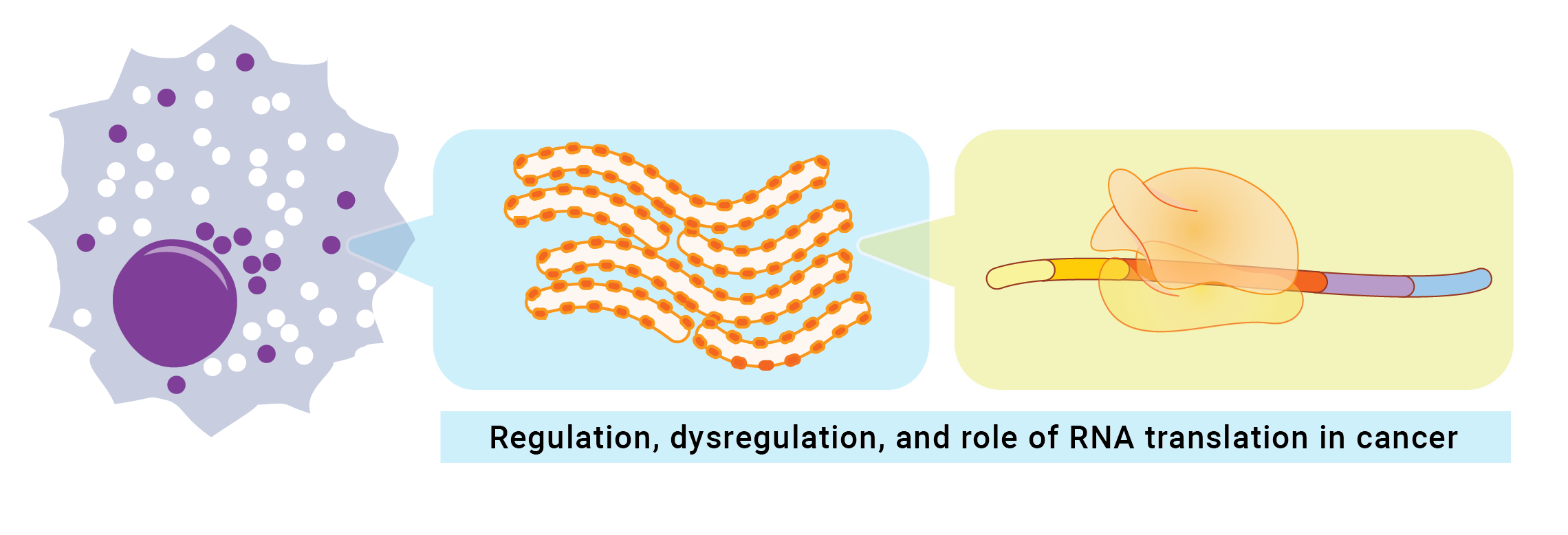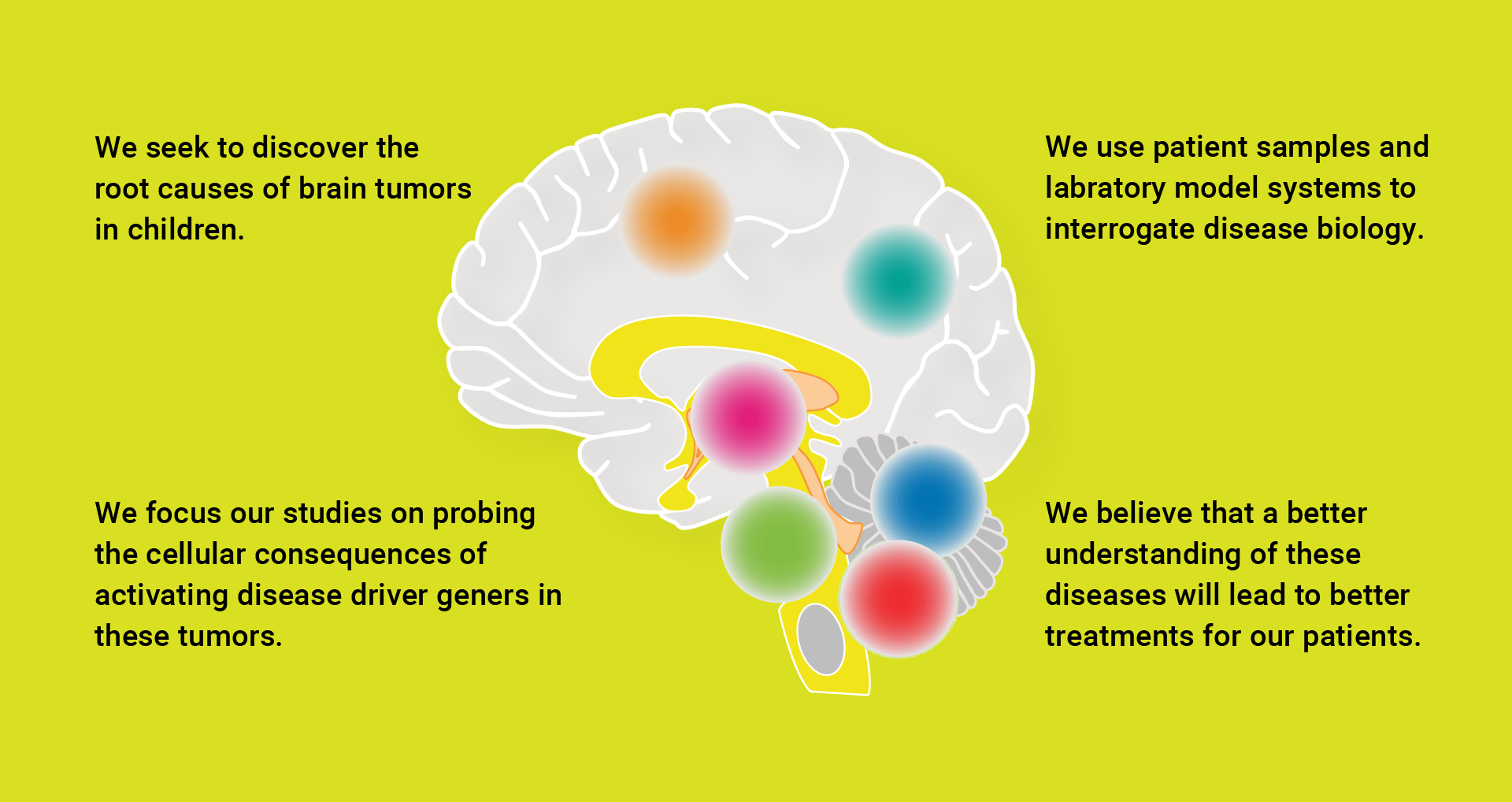In order to be activated, all genes convert their genetic signature of DNA into RNA. That RNA has the potential to translate, or produce, a protein – the molecule of biological function for a gene. This process requires ribosomes, a specialized complex that assembles the amino acids that generate the protein. We study the regulation of RNA translation in cancer and how it shapes tumor biology.

Cancer needs new and better therapies. We study how RNA may give us the next therapeutic breakthrough for childhood cancer. We discover RNA biomarkers of disease that might change clinical practice, and we explore therapeutics that target RNA and RNA translation.

We use genome-wide approaches to map the genes that cancer cells depend on. We discover and characterize non-canonical open reading frames as a layer of underexplored cancer biology. These regions may change the way we think about human cancer genes, where they are located, and how they operate. We believe that searching the non-canonical genome may provide the next key insight to cure a child’s cancer.

We work collaboratively to bring international standardization to non-canonical open reading frames. We coordinate with genome databases, proteomics resources, and academic labs, to classify non-canonical open reading frames and bring them to the global public.


